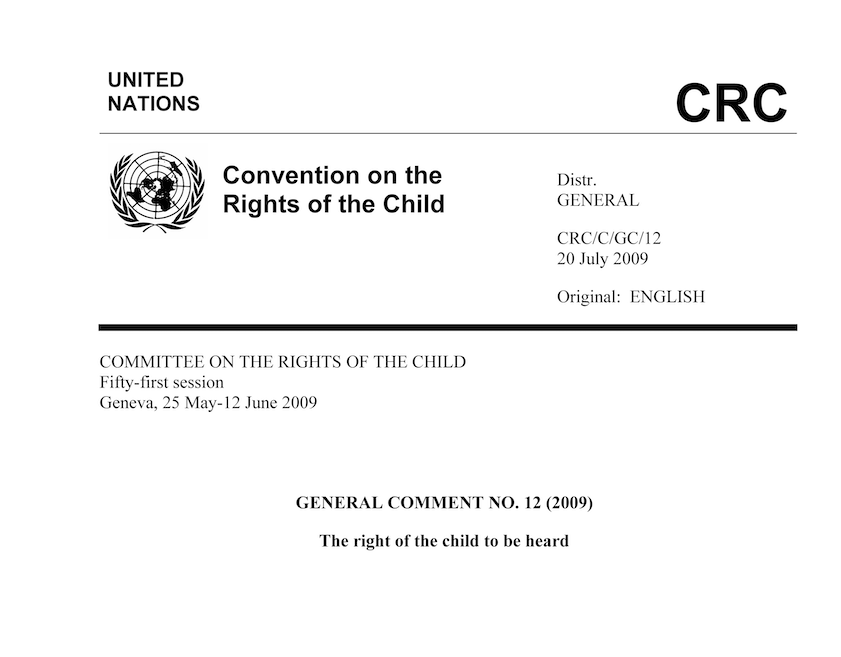UNCRC General comment No. 12 (2009): The right of the child to be heard
'In 2006, the Committee held a day of general discussion on the right of the child to be heard in order to explore the meaning and significance of article 12, its linkages to other articles, and the gaps, good practices and priority issues that need to be addressed in order to further the enjoyment of this right.
The present general comment arises from the exchange of information which took place on that day, including with children, the accumulated experience of the Committee in reviewing States parties’ reports, and the very significant expertise and experience of translating the right embodied in article 12 into practice by governments, non-governmental organisations (NGOs), community organisations, development agencies, and children themselves.
The present general comment will first present a legal analysis of the two paragraphs of article 12 and will then explain the requirements to fully realize this right, including in judicial and administrative proceedings in particular (sect. A). In section B, the connection of article 12 with the three other general principles of the Convention, as well as its relation to other articles, will be discussed. The requirements and the impact of the child’s right to be heard in different situations and settings are outlined in section C. Section D sets out the basic requirements for the implementation of this right, and the conclusions are presented in section E.'
— Extracted from UNCRC General comment No. 12 (2009): The right of the child to be heard, p.6
